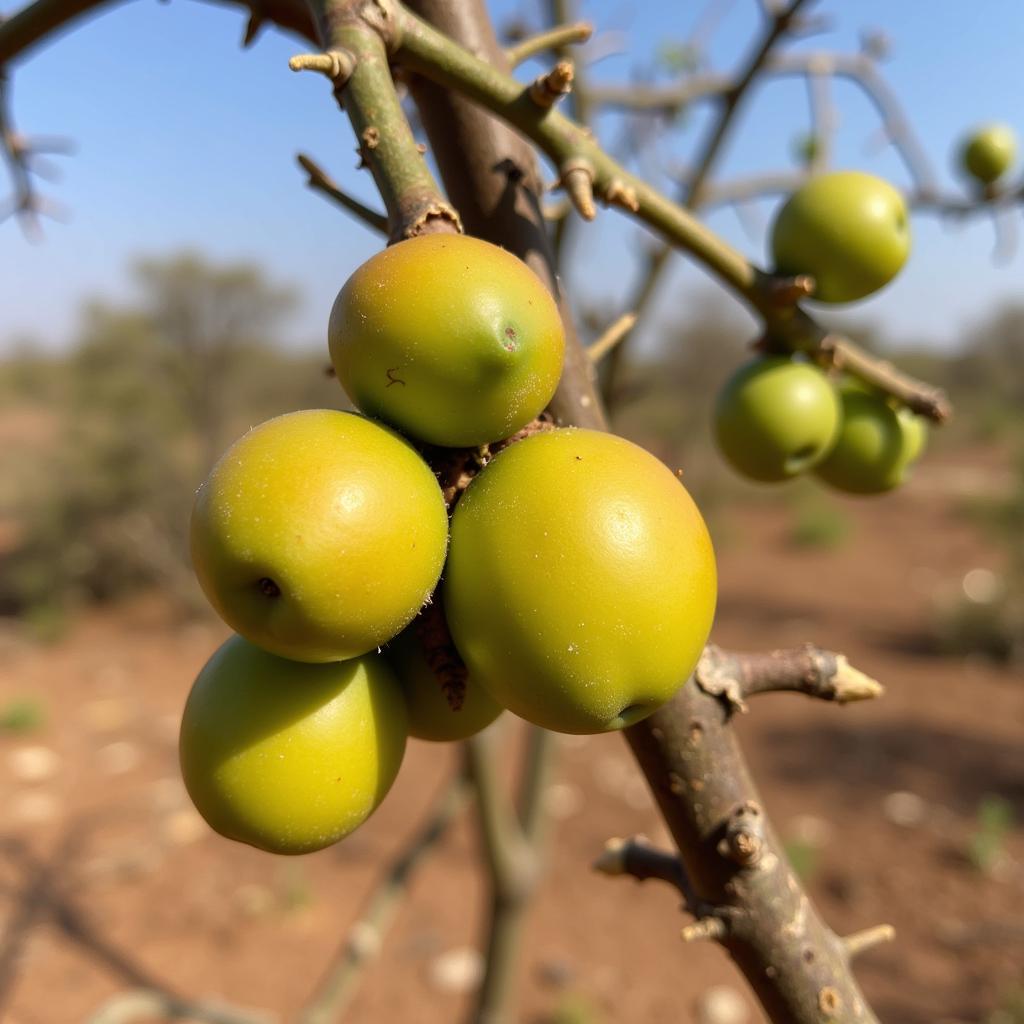Discovering the African Caper Fruit: A Culinary and Cultural Journey
The African Caper Fruit, a unique and versatile ingredient, holds a special place in the hearts and kitchens across the continent. From its tangy flavor to its diverse uses in both sweet and savory dishes, this fruit offers a fascinating glimpse into the rich tapestry of African cuisine and culture. Let’s embark on a journey to explore the wonders of this remarkable fruit.
What is the African Caper Fruit?
The African caper fruit, scientifically known as Capparis tomentosa, is not a true caper but a close relative. It’s a spiny shrub or small tree native to various parts of Africa, thriving in dry and arid regions. The fruit, which resembles a small, round berry, ranges in color from green to yellow when ripe, and possesses a distinct, slightly tangy flavor profile. Its versatility allows it to be used in numerous culinary applications, contributing a unique taste to both traditional and contemporary dishes.
Understanding the Flavour Profile
What does African caper fruit taste like? It’s a complex question with a multifaceted answer. The initial bite often presents a tartness, reminiscent of citrus, balanced by a subtle sweetness. As you savor the fruit, earthy and slightly peppery notes emerge, adding depth and intrigue to the overall flavor. This intricate blend of tastes makes it a sought-after ingredient, adding a distinctive touch to various culinary creations.
 African Caper Fruit on Branch
African Caper Fruit on Branch
Culinary Uses of the African Caper Fruit
From appetizers to desserts, the African caper fruit adds a special touch to a wide array of dishes. Its versatility allows it to be pickled, fermented, or used fresh, offering a unique dimension to different culinary styles. In some regions, it’s a key ingredient in sauces and chutneys, while in others, it’s enjoyed as a refreshing snack.
Traditional Preparations
Across the African continent, the African caper fruit features prominently in traditional dishes. In some cultures, the ripe fruits are boiled and mashed into a flavorful porridge. In others, they’re pickled and added to stews and relishes, lending a tangy and savory counterpoint to richer flavors.
Modern Adaptations
The African caper fruit is also gaining popularity in contemporary cuisine, finding its way into innovative dishes created by chefs across the globe. Its unique flavor profile pairs well with seafood, poultry, and vegetarian dishes, adding a touch of exotic flair.
“The African caper fruit is a true culinary gem,” explains Chef Adeola Oladipo, a renowned expert in African cuisine. “Its unique flavor profile adds depth and complexity to any dish, and its versatility makes it a chef’s dream.”
Beyond the Kitchen: Traditional Uses of the African Caper Fruit
The African caper fruit isn’t just a culinary delight; it also holds significant cultural and medicinal value in various African communities. Traditionally, different parts of the plant have been used for their medicinal properties, treating ailments ranging from digestive issues to skin infections.
Medicinal Applications
Traditional healers have long recognized the medicinal properties of the African caper fruit. Extracts from the roots, bark, and leaves are believed to possess anti-inflammatory and antimicrobial properties. They’re used in traditional remedies for treating a variety of health concerns.
Cultural Significance
The African caper fruit also holds a special place in various cultural practices. In some communities, it’s used in rituals and ceremonies, symbolizing prosperity and good fortune.
“The African caper fruit is deeply intertwined with the cultural fabric of many African societies,” states Dr. Fatima Mbaye, an ethnobotanist specializing in African medicinal plants. “It’s a testament to the rich knowledge and traditions surrounding the use of plants in these communities.”
Growing and Harvesting African Caper Fruit
Cultivating African caper fruit is relatively simple, as the plant is hardy and adaptable to various soil conditions. It thrives in warm climates and requires minimal watering. african food appetizers can be a great addition to your meal plan if you’re looking for variety.
Harvesting Techniques
The fruits are typically harvested when they reach a mature yellow-green color. Careful harvesting techniques are employed to ensure the plant’s sustainability and future yields.
Conclusion: Embracing the African Caper Fruit
The African caper fruit is more than just an ingredient; it’s a testament to the rich biodiversity and culinary ingenuity of the African continent. From its distinctive flavor to its diverse uses in cuisine, medicine, and culture, the African caper fruit offers a unique and rewarding culinary adventure.
FAQ
- Where can I buy African caper fruit?
- How do I store African caper fruit?
- Can I grow African caper fruit in my garden?
- What are the health benefits of African caper fruit?
- What are some simple recipes using African caper fruit?
- Are there any precautions I should take when consuming African caper fruit?
- Are there any other names for African caper fruit?
If you need any support, contact us at Phone Number: +255768904061, Email: kaka.mag@gmail.com or visit our address: Mbarali DC Mawindi, Kangaga, Tanzania. We have a 24/7 customer service team.
